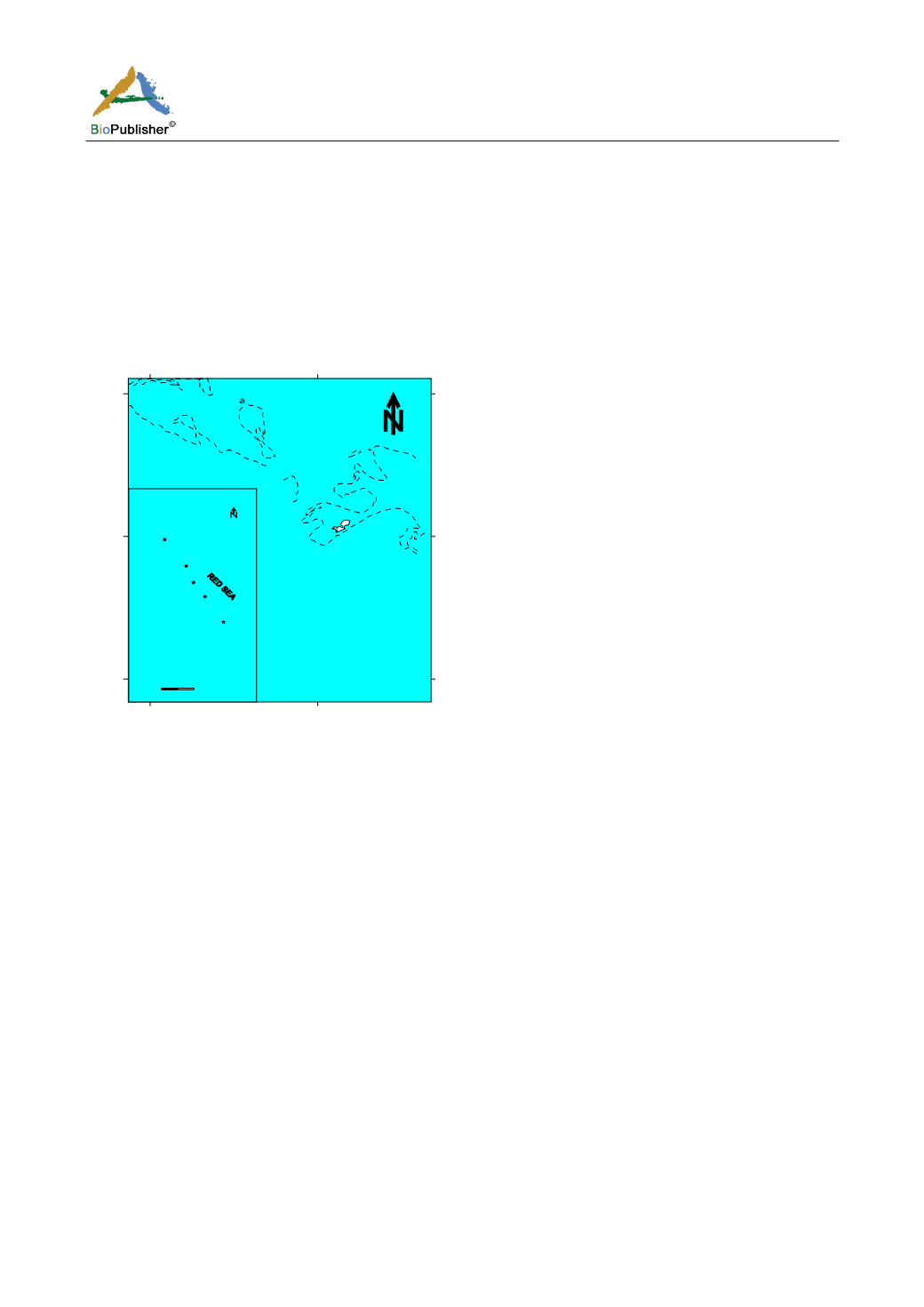
International Journal of Marine Science, 2017, Vol.7, No.21, 200-204
201
27°6'
27°12'
27°18'
33°45' 36"
33°51' 36"
Hurghada
Red Sea
Abu Shaar
Abu Galawa
0
1
2
150 Km
Hurghada
Safaga
Qusier
MarsaAlam
RasGharieb
Sinai
Suez
EGYPT
Hipposcarus harid. In having mass asymmetry in the otolith, fish might change its habit (Gagliano et al., 2007;
Gagliano and McCormick, 2009). The survival of young individuals will be threatened as it will be difficult for
them to find a proper place for settlement and hence a pronounce changes to the stock of the species will result.
1 Materials and Methods
Hurghada is located at the northern part of the Red Sea between latitude 270 10'N- 270 33'N and longitudes 330
70'E – 330 85'E (Figure 1). It is situated 500 km south-east of Cairo, and extends for about 36 kilometres.
Hurghada is bounded by Ras Gareb in the north, Safaga in the south, Red Sea coast in the east and Sohag and
Asyut Governorates in the west. Hurghada was selected as a study area in this work due to its importance as a
main fishing ground for the two species in question.
Figure 1 Map showing sampling locations
The fish landings at Hurghada fishing harbour is used to obtain specimens of parrotfish samples during two
fishing seasons June-August, 2012-2013. The nets used consist of one layer in gill nets and three layers in
trammel nets, the first and third layers have large mesh size while the second (middle) one with narrow openings.
The fishing net used are with length range of 60 to 100 m with mesh size of 2 – ¼ mm. A single population of the
two species was used in the analysis presented in this study. Total length was measured to the nearest 0.1 mm.
Sagittae were extracted and then cleaned and stored dry in glass tubes. The left and right otolith were dealt with
separately. Sagittae specimens were collected from different fish length groups and several specimens from each
length group were collected. The weight of each otolith was taken using Sartorius TE 313S analytical balance to
an accuracy 0.0001 g.
The otolith mass asymmetry (x) was calculated from:
x = (mR – mL) m-1
Where mR and mL are the otolith masses of the right and left paired otoliths and m is the mean mass of the right
and left paired otoliths. The x value can fall between -2 and +2, and x = 0 represents the absence of mass
asymmetry (mR = mL), whereas x = -2 or x = 2 represent the maximal asymmetry (absence of one otolith). The
positive value of x means that the right otolith mass is larger than the left otolith weight and a negative sign means
the opposite. The absolute value of the species otolith mass asymmetry |x| is calculated as the average individual
value. To assess otolith growth, rate the association between otolith mass and fish length, m = a. l + b, was
calculated where, l is the length of the fish, “a” is the coefficient illustrating the growth rate of the otolith, and “b”
is a constant for the species studied.


